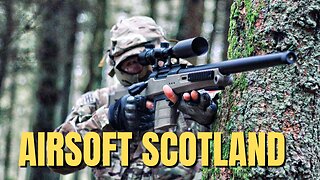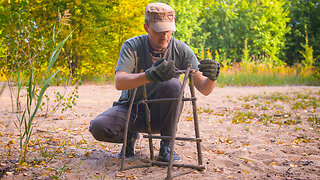Premium Only Content

1940’s "LIVING HISTORY" BIOGRAPHY OF ADMIRAL RICHARD E. BYRD ARCTIC & ANTARCTIC RESEARCH
This film "Living History" focuses on the career of Rear Admiral Richard E. Byrd and his research expedition to the Antarctic in the late 1920’s to the early 1930’s. Admiral Richard Byrd was an American naval officer, explorer and had won himself the Medal of Honor for valor. His first expedition consisted of two ships and three airplanes with the flagship of the trip being the City of New York. On this trek, he and his crew conducted photographic expeditions and geological surveys. The film is presented by The News Magazine (:12) with American students being the targeted audience. Ships of the expedition are seen in the waters of the New York Harbor in 1930 after returning from their first voyage to the North and South Poles (:24). Admiral Byrd first appears at (:34) prior to celebrations in the streets of New York upon his arrival (:38). Byrd rides a parade car through the streets (:49). He is seen again 23 years later addressing students (:59) about the differences between the northern and southern poles. Footage follows of the North Pole (1:15) and the South Pole (1:25). Men of the 1926 expedition are seen donning thick cold weather gear (1:57) near the Josephine Ford Byrd Expedition plane. This expedition lead to the North Pole becoming one of the most strategic locations (2:15). The Josephine plane is seen returning to the expedition’s base at Spitsbergen (2:23). Men on the ground surround the plane as it touches down from the trek which took over 16 hours (2:27). The pilot, Floyd Bennett and Admiral Byrd are pictured together (2:35). Byrd returns to speak about avoiding war though he believed if it was to come to fruition it would take place mainly across the top of the world (2:41). Snow plows move snowy terrain across the arctic tundra (2:55). Footage follows of one of Byrd’s six expeditions (3:55) as he charts the 1,400-mile course (4:03). As their vessel neared the destination, it is seen cutting through large ice patches (4:13). The expedition arrives on the shores of Antarctica (4:25). Scouts raise the US flag (4:31). Native penguins of the area are seen (4:38). Men move blocks of snow which will be utilized for water sources (4:41). An aerial shot of the area known as Little America follows (5:19). Admiral Byrd returns from a scouting flight just ahead of a blizzard (5:29) as members of the voyage head below ground for shelter and to study the photographs taken during Byrd’s flight (5:50). The blizzard is viewed from above ground (5:55). Participants of the expedition take navigation classes in the underground shelter (6:46). The storage lockers which hold the camp members’ frozen food supplies are viewed (6:57). Meat is so deeply frozen it must be chopped with an axe (7:12). As the storm passes, the men resurface (7:23) and set to uncovering snow bound tractors (7:28). Dogs and dog sleds are used to carry supplies of important information retrieved on the trip (7:40). The drivers of the dog sleds are seen returning to ships which were being loaded up with supplies (7:47). The film begins to wrap up as Byrd appears for a final time to talk about returning to Antarctica (8:09). The film had been produced by Warner Brothers Pictures Inc. (8:46).
-
 DVR
DVR
TheAlecLaceShow
14 hours agoLive at CPAC | Interviews with Dean Cain, Rep. Comer and more! | The Alec Lace Show
10.5K1 -
 LIVE
LIVE
Major League Fishing
2 days agoLIVE Tackle Warehouse Invitationals, Stop 1, Day 2
510 watching -
 LIVE
LIVE
I_Came_With_Fire_Podcast
11 hours agoNOC Spy: CIA uses SATANIC RITUAL ABUSE to make SLEEPER Cells
528 watching -
 28:42
28:42
CatfishedOnline
1 day ago $1.15 earnedWoman Insists Morgan Wallen Relationship Isn't a Romance Scam!
13.8K -
 16:25
16:25
TSPLY
1 day agoNew CNN / MSNBC Meltdown Moments Of Getting Mad At Donald Trump In February
18.7K9 -
 8:33
8:33
scoutthedoggie
4 hours agoAirsoft War Games Scotland
12.8K3 -
 4:56
4:56
Kirill MultitoolOfficial
1 day ago $1.81 earnedSurvival TIPS and usefull bushcraft DIY in the wild
33.5K3 -
 27:25
27:25
ArturRehi
1 day agoThis is How Dictatorships are Formed
17.5K5 -
 59:35
59:35
AlaskanBallistics
17 hours ago $0.45 earnedI Love this Gun Episode # 11
12.2K1 -
 1:21:01
1:21:01
BibleUnbound
20 hours agoThe Complete Story of Moses: The Man of God
18K4